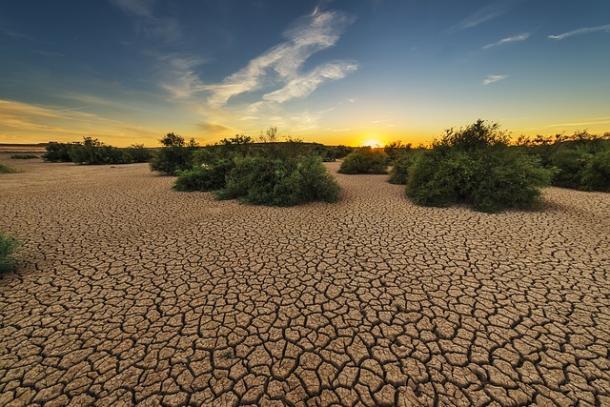Drought

Drought is a prolonged dry period in the natural climate cycle that can occur anywhere in the world. It is a slow onset phenomenon caused by a lack of rainfall. Compounding factors, such as poverty and inappropriate land use, increase vulnerability to drought.
It has a major impact on food security, health and population displacement and migration.
Since time immemorial, drought has been a feature of the natural variability of our climate. But the frequency, intensity, and duration of droughts are expected to rise in several parts of the world as a result of climate change, with an increasing human and economic toll.
It has been estimated that droughts are the world’s costliest natural disaster, accounting for 6-8 billion US dollars annually, and impacting more people than any other form of natural disaster. Since 1900, over 11 million people have died as a result of droughts, and 2 billion people have been affected.
Since the 1970s, the land area affected by drought has doubled, undermining livelihoods, reversing development gains and entrenching poverty among millions of people who depend directly on the land. In the period from 1970 to 2012, drought caused almost 680,000 deaths, due to the severe African droughts of 1975, 1983 and 1984.
Despite this, effective drought management policies are missing in most parts of the world. Response to drought tends to be piecemeal and crisis-driven, rather than proactive.
WMO Initiatives
The Integrated Drought Management Programme (IDMP) is a joint initiative between WMO and the Global Water Partnership, and works with a wide range of partners in order to support stakeholders by providing them with policy and management guidance and by sharing best practices and knowledge for integrated drought management.
This is based on 3 pillars:
#1 Monitoring and Early Warning Systems: It is critical to monitor drought indicators such as precipitation, temperature, soil moisture, vegetation, streamflow and ground water. Early warning systems analyze these drought indicators and disseminate drought forecasts to key stakeholders in a timely manner.
#2 Vulnerability and Impact Assessment: A vulnerability and impact assessment considers social, economic and environmental factors to determine a community’s susceptibility to drought hazards. For example, women, children, pastoralists, farmers and marginalized communities could be vulnerable population groups.
#3 Mitigation and Response: Drought mitigation includes both the structural (i.e. appropriate crops, dams and engineering projects) and non-structural measures (i.e. policies, public awareness, and legal framework) necessary to limit the adverse impacts of drought. Drought response refers to the assistance administered during or immediately after the drought to save lives and meet the affected community’s basic needs.
Fast Facts
Each year water insecurity costs the global economy 500 billion dollars.
The longest dry period ever recorded was 172 months (10 October 1903 – 1 January 1918) in Arica, Chile.
Resources
Handbook of Drought Indicators and Indices
National Drought Management Policy Guidelines: A template for action
Atlas of Mortality and Economic Losses from Weather and Climate Extremes (1970-2012)

